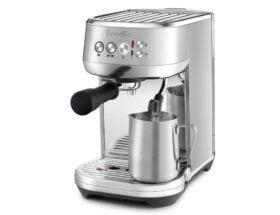
How to Reduce Acidity in Coffee for a Smoother Brew
Coffee lovers know that acidity can sometimes be a drawback when it comes to enjoying their favorite brew. Whether it’s the bitter aftertaste or the stomach discomfort it can cause, the acidity in coffee can diminish the overall experience. But fear not! In this blog post, we will explore four techniques that can help reduce the acidity in coffee, resulting in a smoother and more enjoyable cup.
Table of Contents
Coffee Acidity and Its Impact on Taste
Acidity is an essential characteristic of coffee that adds brightness and liveliness to its flavor profile. However, for some coffee lovers, the high acidity levels can cause discomfort, such as heartburn or digestive issues. If you find yourself longing for a smoother and less acidic cup of coffee, you’re not alone. Fortunately, there are several techniques you can employ to reduce the acidity in your brew without compromising its taste.
Did you know that the acidity in coffee is not actually related to the pH level of the brew? It's true! The acidity in coffee is primarily caused by organic acids, such as chlorogenic acids and citric acids, which give coffee its bright and tangy flavors. So, reducing the acidity in coffee isn't about changing the pH level, but rather about minimizing the impact of these organic acids on the taste of your brew.
Reducing Coffee Acidity for a Smoother Brew
Are you a coffee lover who can’t resist a good cup of joe but can do without its acidic aftertaste? Worry not, because in this comprehensive guide, we will explore four techniques to help you minimize the acidity in your coffee, resulting in a smoother brew that’s gentle on your stomach and taste buds. From the type of coffee beans you choose to the water you use for brewing, we’ll cover every aspect of reducing acidity to ensure a more enjoyable coffee-drinking experience.
Coffee Bean Selection
One of the key factors in controlling acidity levels in your coffee starts with selecting the right coffee beans. By opting for low-acid coffee beans, you can significantly decrease the acidity in your brew. Look for coffee beans labeled as low-acid or specifically processed to have reduced acidity. Some popular low-acid coffee bean varieties include Brazilian Santos, Sumatran, and Colombian Supremo. Experiment with different options to find the one that suits your taste preferences best.
Coffee Water Adjustment
Believe it or not, the water you use to brew your coffee can have a significant impact on its acidity. Hard water with a high mineral content tends to extract more acids from the coffee grounds, resulting in a more acidic brew. To counteract this, consider using filtered or distilled water, which has a lower mineral content. Additionally, adjusting the water’s pH level by adding a pinch of baking soda can help neutralize the acidity and create a smoother cup of coffee.
Coffee Brewing Methods
The brewing method you choose can also influence the acidity levels in your coffee. Certain brewing techniques, such as cold brewing or using a French press, tend to produce a smoother, less acidic cup. Cold brewing involves steeping coffee grounds in cold water for an extended period, resulting in a milder, less acidic flavor profile. Similarly, the metal filter of a French press allows more oils and solids to pass through, making the cup less acidic compared to paper filters used in drip brewing.
Low-Acid Coffee Brewing
If you’re looking for the ultimate low-acid coffee experience, consider exploring specialized brewing methods and equipment developed to reduce acidity. Some popular alternatives include using an AeroPress or a Chemex, both of which produce a clean cup of coffee with minimal acidity. These methods allow for greater control over brewing variables and can drastically improve your coffee’s taste.
In conclusion, reducing acidity in your coffee is not as complicated as it may seem. By selecting the right coffee beans, adjusting your brewing water, exploring different brewing methods, and even investing in specialized equipment, you can enjoy a smoother, less acidic cup of coffee that won’t leave your taste buds or stomach with an unpleasant aftertaste. Remember to experiment and find the combination that works best for your preferences, and savor every sip of your low-acid coffee.
Now that you’re armed with these four techniques to reduce acidity, why not start experimenting with them today? Your taste buds will thank you for the smoother, more enjoyable coffee experience!
Step-by-Step Guide: Reducing Coffee Acidity for a Smoother Brew
Step 1: Selecting the Right Coffee Beans
Choosing the right coffee beans plays a crucial role in reducing acidity. Look for beans that are naturally low in acidity, such as those from Brazil, Guatemala, or Sumatra. Avoid beans from regions like Kenya or Ethiopia, which tend to have higher acidity levels.
Suggested coffee bean types:
- Brazilian Santos
- Guatemalan Antigua
- Sumatra Mandheling
Step 2: Low-Acid Coffee Brewing Methods
The brewing method you choose can significantly impact the acidity level of your coffee. Opt for brewing methods that use longer extraction times, as they tend to result in a smoother and lower-acid brew.
Suggested low-acid brewing methods:
- Cold brewing
- French press
- Aeropress
Step 3: Adjusting Your Brewing Water
The quality and pH of your brewing water can affect the acidity of your coffee. Consider adjusting your water to achieve a more balanced brew.
Suggested water adjustments:
- Use filtered water to remove impurities that may contribute to acidity.
- Test the pH of your water and aim for a slightly alkaline level of around 7.0.
Step 4: Experiment with Coffee Water Ratios
The ratio of coffee to water can also impact the acidity of your brew. By adjusting the amount of coffee grounds and water, you can achieve a smoother and less acidic cup.
Suggested coffee water ratios:
- For pour-over brewing methods, start with a ratio of 1:15 (1 part coffee to 15 parts water) and adjust to taste.
- For cold brew, a common ratio is 1:4, but feel free to experiment to find your preferred balance.
By following these steps, you can significantly reduce the acidity in your coffee and enjoy a smoother brew. Remember, personal taste preferences may vary, so don’t hesitate to experiment and find the perfect balance for your palate.
Wrap Up
Reducing acidity in coffee is essential for achieving a smooth and enjoyable brew. By selecting the right coffee beans, adjusting your brewing water, and using the appropriate brewing methods, you can significantly alter the taste of your coffee. Whether you prefer a low-acid cup or have sensitive stomachs, these techniques will help you minimize acidity and enhance your coffee experience.
Remember, experimenting with different methods and finding what works best for you is key. Don’t be afraid to try new techniques or adjust variables to achieve your desired taste. With a little practice and patience, you’ll be able to brew low-acid coffee that suits your preferences perfectly.
Have you tried any of these techniques to reduce coffee acidity? What are your favorite low-acid brewing methods? Share your thoughts and experiences in the comments below. And if you’re eager to explore more coffee-related topics, check out some of our other guides:
- TenCoffees
- How to Vietnamese Coffee: The Strong & Bold Coffee
- How to Hario V60: The Ultimate Guide to Making Perfect Coffee
- How to Siphon Coffee: The Slow and Elegant Way to Brew a Perfect Cup
Thank you for reading, and happy brewing!









